The content of the article
Spots from the blood often appear on clothes, so the question of cleaning the product becomes extremely important. Housewives are faced with a problem at the first moment of washing, when, under the influence of hot water, the blood eats even more into the fabric structure. A feature of removing stains from such contamination is timeliness: the product must be processed in the next 3 hours after contamination. To carry out the procedure correctly, consider the basic methods of breeding.
Ice water
The blood contains protein, which collapses under the influence of high temperatures. For this reason, stain removal must be carried out using a cold cycle.The best and versatile option is to use the following composition: brew in 300 ml. boiling water 50 gr. dried chamomile flowers, leave for half an hour, strain through cheesecloth and cotton wool. Pour broth into ice tins, freeze. After that, dial cold running water into the basin, add ice cubes, detergent in the form of a gel (dishwashing liquid will do). Soak clothes, cover the wash with a film, wait 30-40 minutes. After the expiration date, gently rub the place of pollution, it is allowed to use a soft-bristled toothbrush.
Soap
Salt
Prepare a solution to pre-soak the clothes. To do this, pour into the container 6 liters of water, add 300 grams. chopped salt, 45 gr. soda and 20 ml. liquid glycerin. Stir to dissolve the crystals, the solution should turn out to be cloudy. Soak clothes in it, leave for 4-6 hours. Throughout the exposure period, check the product, it is possible that the stain is washed out earlier if you rub it a little. After the procedure, wash things in the machine, taking into account the temperature conditions for your type of fabric.
Hydrogen peroxide
Lay on the seamy side of the thing a few cotton pads (right under the stain) so that the composition does not reprint on the back of the clothing during dissolution. After that, apply a solution of peroxide (3-6%) on impurities, leave for 7-10 minutes. At this time, prepare the mixture for washing: take 30 grams. powder and 40 ml. water, connect them together to get a thick mass. Spread evenly on the stain, rub with a soft toothbrush. After 5 minutes, wash the thing with your hands or use the machine. Before applying the compound directly, check it on a small area of the product. Ensure that the product does not stain the colored clothing.
Salt and soda
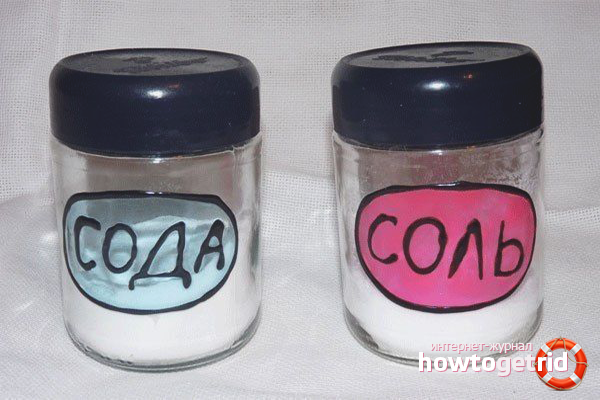
Dissolve in 4.5 liters of water 100 gr. table salt and 50 gr. soda, wait half an hour to dissolve the granules. Soak the product in the solution for 1 hour, then remove, carefully check the result. If the stain does not want to fade or fade, prepare a hearty mixture. Combine soda ash and salt in equal proportions, dilute the mixture with water. Do not wait for the complete dissolution of the crystals, immediately cover with a stain. Put a cosmetic tampon or cotton pad on top, leave for a quarter of an hour. After the expiration date, rinse the clothes with your hands, send to be washed in the machine. Be sure to add conditioner to soften the laundry.
Starch (corn, potato)
Means is suitable for processing of delicate types of fabric. Prepare a mixture of two packets of starch and ice-cold filtered water, apply the composition to the blood stains, wait until it is completely dry. After that, take a toothbrush and remove the dry surplus, evaluate the result. If necessary, repeat the procedure. After the stains have faded or gone 90%, prepare a solution of 75 ml. a solution of vinegar (6%) and 4 liters of water, rinse the product.Vinegar is used in production to dye fabrics and maintain color, so it can be used on products of any shades. At the end of all manipulations, carry out a hand wash, add a little fabric rinse.
Ammonia
Get 3% ammonia, soak a tampon in it and do a test on the unobtrusive area of the product. Wait 10 minutes, if there is no change for the worse, feel free to proceed to treatment. Apply a small amount of the composition to the entire area of pollution, do not affect the clean areas. For the first time, leave for 5 minutes, then rinse with cold water. If the stain is not removed, use liquid ammonia again, wait 7-10 minutes. After all the manipulations, send clothes to the machine, do not forget to add a softening conditioner.
Glycerol
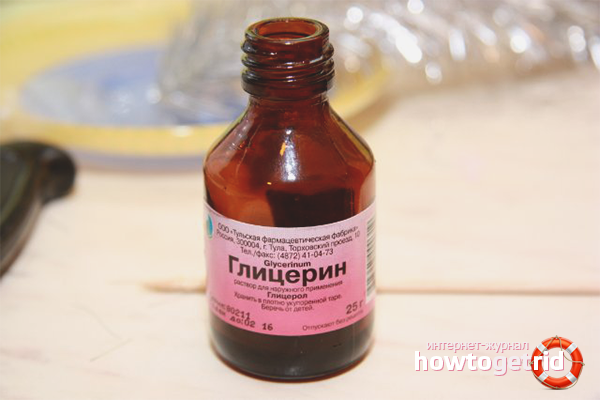
In cases where blood stains could not be removed in a short time, use liquid glycerin. The drug copes with contamination of any complexity, if used in a warm form. Take the vial and heat it in a water bath, soak a cotton pad in glycerin, carefully cover the stain.Do not rub, wait 5 minutes, the drug will pull the blood yourself. After completing the procedure, wash the clothes with your hands, rub with tar soap, do not wash off. Immediately put in the machine and turn on the intensive wash cycle at a temperature of 30-40 degrees.
Sodium tetraborate
Prepare a chemical composition for removing blood stains yourself. Purchase sodium tetraborate and ammonia from the household chemicals store. Pour 270 ml into the pelvis. cold, if possible icy water, add 20 gr. tetraborat, 10 gr. ammonia. Soak the product or apply the product to contaminated areas locally, wait 3 minutes. Then immediately send to erase the machine. It should be attentive to the processing of colored products, as well as things made from delicate fabrics.
Dishwashing liquid
To remove blood stains, you do not need liquid, but dishwashing gel. In order to effectively clean up the contamination, the composition should not creep away on the surface of the product, give preference to the products “Eared Nanny” or “Fairy”. Spread the gel onto the stain in a thick layerPut the food film on top and wait for about 5 hours. Then wash the clothes, evaluate the result. In the absence of such, repeat the previous manipulations.
a piece of chalk
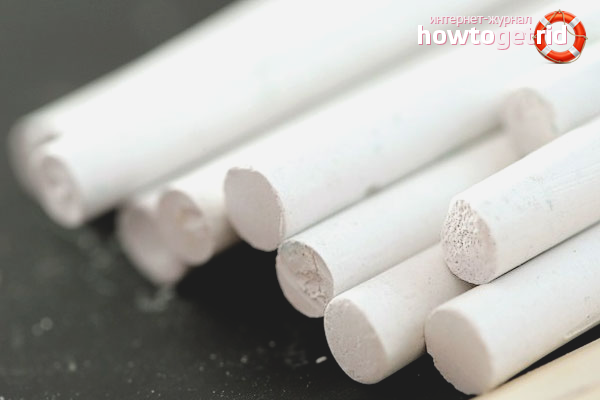
Perform a pre-machine wash using powder and rinse aid, a 30 minute mode will be sufficient. Purchase glycerin in liquid form in a pharmacy, mix 30 ml. product 25 gr. chalk powder, pour in 10 ml. clean water. Using a sponge or a paintbrush, apply the composition to the entire surface of the stain, leave for 6 hours. In cases where the result is incomplete, repeat the application and cover the stain with food film, leave for another 3 hours. Only after this period, send clothes to the final wash.
Lemon acid
The tool is only suitable for removing contaminants from very light things (white, beige). Pour in a saucepan of 250 - 300 ml. clean water, add 2 bags of citric acid. Put on the stove, boil and immediately turn off (so that the granules are completely dissolved). When the formulation reaches room temperature, dial it with a syringe and distribute evenly over the blood spot.
It is advisable to put polyethylene and a cotton napkin between two layers of fabric so that the blood does not get printed on the back side. Exposure time - until complete drying.Once the product is processed, wash your hands and look at the result. It is allowed to repeat the procedure several times, but care must be taken when handling delicate and colored fabrics.
The above composition well removes fresh blood stains, with old contaminations will have to tinker. Take 3 bags of citric or tartaric acid, dilute with water to a thick consistency. Apply on stains, leave for 25-30 minutes, and then run the machine wash.
Lemon
Since citric acid is highly concentrated, it is not suitable for removing stains from colored products. For these purposes, lemon is used. Depending on the size of the affected area, take 2-3 lemons, squeeze the juice out of them, leave the pulp. Apply to the entire area of dirt, cover with gauze cloth, leave for half an hour. After that, cut another lemon in half, wipe the spots with the pulp, soak again for about 25-30 minutes, rinse. If the stains are not completely removed, sprinkle them with potato starch (a few bags). Wash clothes in a convenient way, dry them in fresh air.
Blood stains are considered to be difficult to remove pollution.If in the case of rust, coffee, a marker, the product can be boiled or washed in hot water, then at such moments this possibility is absent. Use the folk remedies cold cycle, or cover the affected area with warm glycerin. Always carry out a test on an unobtrusive part of the product in order to calculate in advance all possible risks.
Video: how to wash bloody stains on clothes

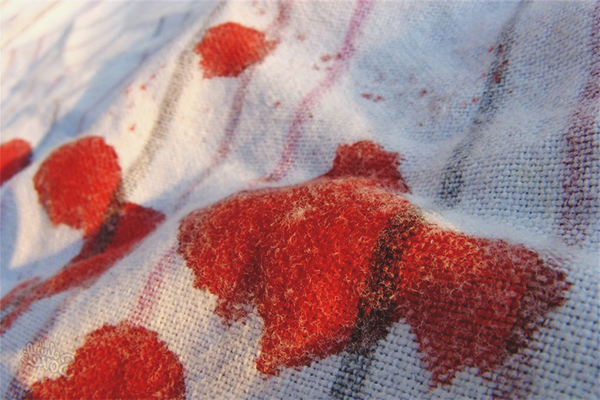



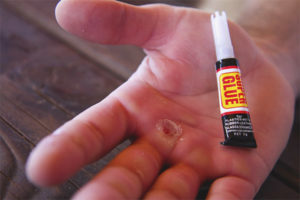
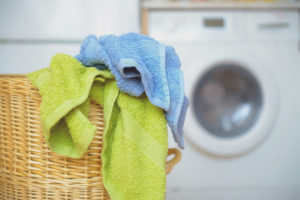
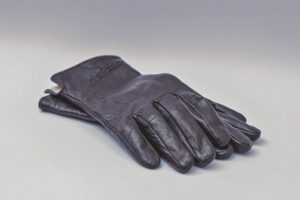


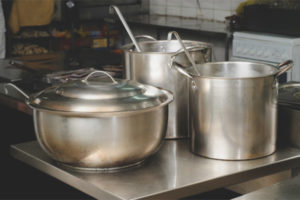
To send